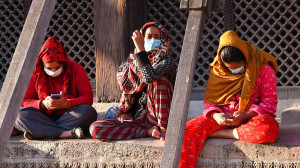Health
Air turns toxic, as authorities look the other way
Air pollution cuts Nepalis’ lives by over three years and causes 26,000 premature deaths per year, says World Bank.
Arjun Poudel
Open burning has become a daily concern for Dinesh Lal Shrestha, a resident of Tarakeshwar Municipality in the northwestern rim of Kathmandu Valley, and his morning-walk companions.
With the start of the dry season, stubble and waste burning in the open, which has become rampant around the Kathmandu Valley, has again become a big factor behind deteriorating air quality.
“One can see thick plumes of smoke at multiple locations within a small area,” complained Shrestha, who is from ward 5 of the municipality. “Along with open burnings, pollution layers can be seen in the skyline in the morning, which means air quality in the Valley is worsening. I wonder why the authorities are not taking measures to prevent this.”
After every harvest, farmers often burn stubble and other agricultural waste to prepare fields for new crops. Along with this, burning other types of waste also contributes to the deterioration of air quality.
According to the air quality data of IQAir, a Swiss group that collects air quality data from around the world, air quality of various places of the Kathmandu Valley have reached unhealthy levels for sensitive groups.
The air quality of Kritipur reached 138 micrograms per cubic metre (μg/m3) on Monday afternoon. Gausala, Kathmandu recorded 137 micrograms per cubic metre followed by Chhetrapati area 133, Ramkot 130, Tarakeshwar 120, and Thapathali 119 micrograms per cubic metre. The western Nepal town of Dhangadhi recorded 142 micrograms per cubic metre.
PM2.5 refers to particulate matter (solid or liquid droplets) in the air that is less than 2.5 micrometers in diameter. It is among the most dangerous pollutants that can get past the nose and throat to penetrate the lungs and even the bloodstream. PM2.5 particles are small and are also likely to stay suspended in the air for a long time, increasing the chances of people inhaling them.
The PM2.5 concentration recorded on Monday is many times higher than the World Health Organisation’s annual guideline of 5 micrograms per cubic metre.
By comparison, Indian capital New Delhi has been ranked as the world’s most polluted city, with an air quality index of 451 on Monday followed by Lahore, Pakistan, at 392.
“Me and my morning walk companions ask people not to burn, when we see them setting fires,” said Shrestha. “But most people ignore our request. Local authorities can launch awareness drives, and take preventive measures, including fines, to prevent open burning practices, but they are doing nothing,”
On Sunday, the Kathmandu Metropolitan City issued a public notice asking people not to burn waste. The Environment Department of the city office has also warned that violators could be fined up to Rs10,000.
“We will send our [municipal] police immediately if we are informed about open burning,” said Sarita Rai, chief of the department. “But we all know that our initiative alone is not sufficient to keep the air of the Valley clean. Smoke from open burning in other local bodies also pollutes the air of the entire Kathmandu Valley.”
When asked if the city office is coordinating with other local bodies in the Valley to tackle open burning and air pollution, Rai said that each municipality operates independently and manages things within its own jurisdiction.
Elected members of Tarakeshwar Municipality claimed that they are unaware of open burning within the municipality and said burning of stubble to clear the agriculture fields should not be seen as a big issue.
“We have some agricultural lands and farmers in our municipality,” said Shambhu Prasad Phuyal, chair of ward-5 of the municipality.“Farmers burn agricultural waste during cultivation, which is common practice. We have issued a notice prohibiting burning of hazardous waste.”
Hazardous air pollution poses significant health and economic challenges for Nepal. According to the World Bank report, air pollution shortens the average life expectancy of Nepal’s residents by more than three years, and leads to almost 26,000 premature deaths each year.
Beyond health impacts, poor air quality leads to reduced labor productivity and negatively impacts tourism (lower visibility of the Himalayas and cancelled flights). Overall, poor air quality is estimated to cost the equivalent of more than six percent of Nepal’s gross domestic product (GDP) each year.
Several studies carried out in the past in Nepal also showed that toxic air takes a huge toll on public health and cuts short people’s lives.
Nepali lives are being cut short by around five years, according to a report by the Air Quality Life Index (AQLI), which converts air pollution concentration into an impact on life expectancy. AQLI is a metric produced by the Energy Policy Institute at the University of Chicago.
Air quality experts say that without local governments taking initiatives to prevent open burning and other measures, improvement of air quality is almost impossible.They say that through awareness drives and other preventive measures, local authorities can bring the behaviour of waste burning.
“Along with the burning of agricultural waste, people also burn hazardous waste materials,” said Bhupendra Das, an air quality and clean energy specialist. “And such practice is not limited to any particular place but common all over the country.”
Experts stress the need for coordination among local units to reduce emissions including from waste burning and other sources, including factories and vehicles.
Air pollution has emerged as the number one risk factor for death and disability in Nepal, surpassing malnutrition and tobacco use, according to the World Bank.




 11.12°C Kathmandu
11.12°C Kathmandu


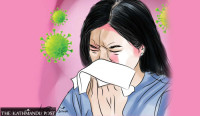


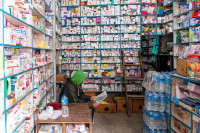
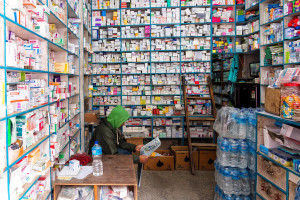
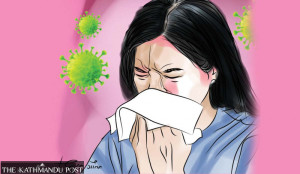




%20(1).jpg&w=300&height=200)

